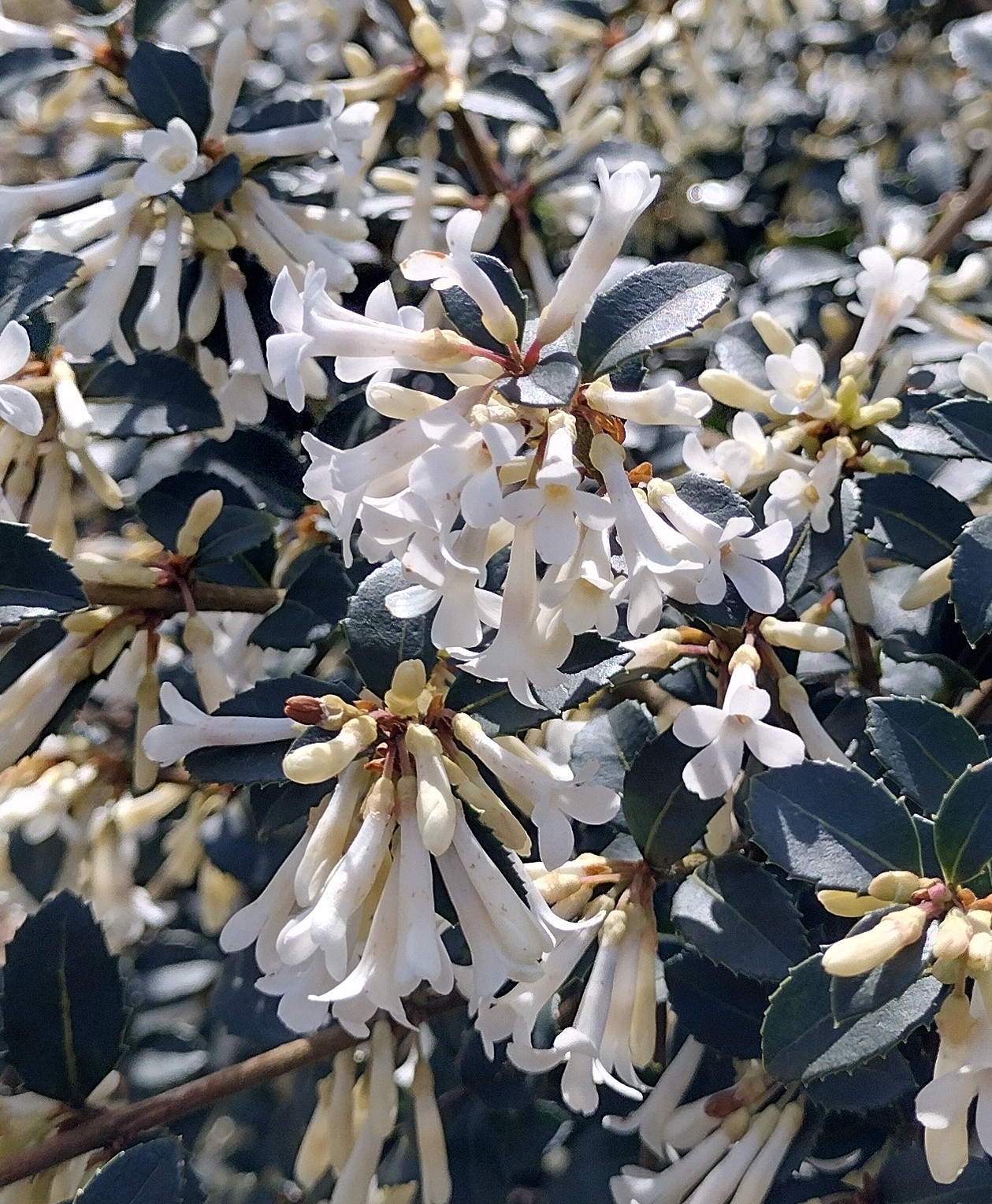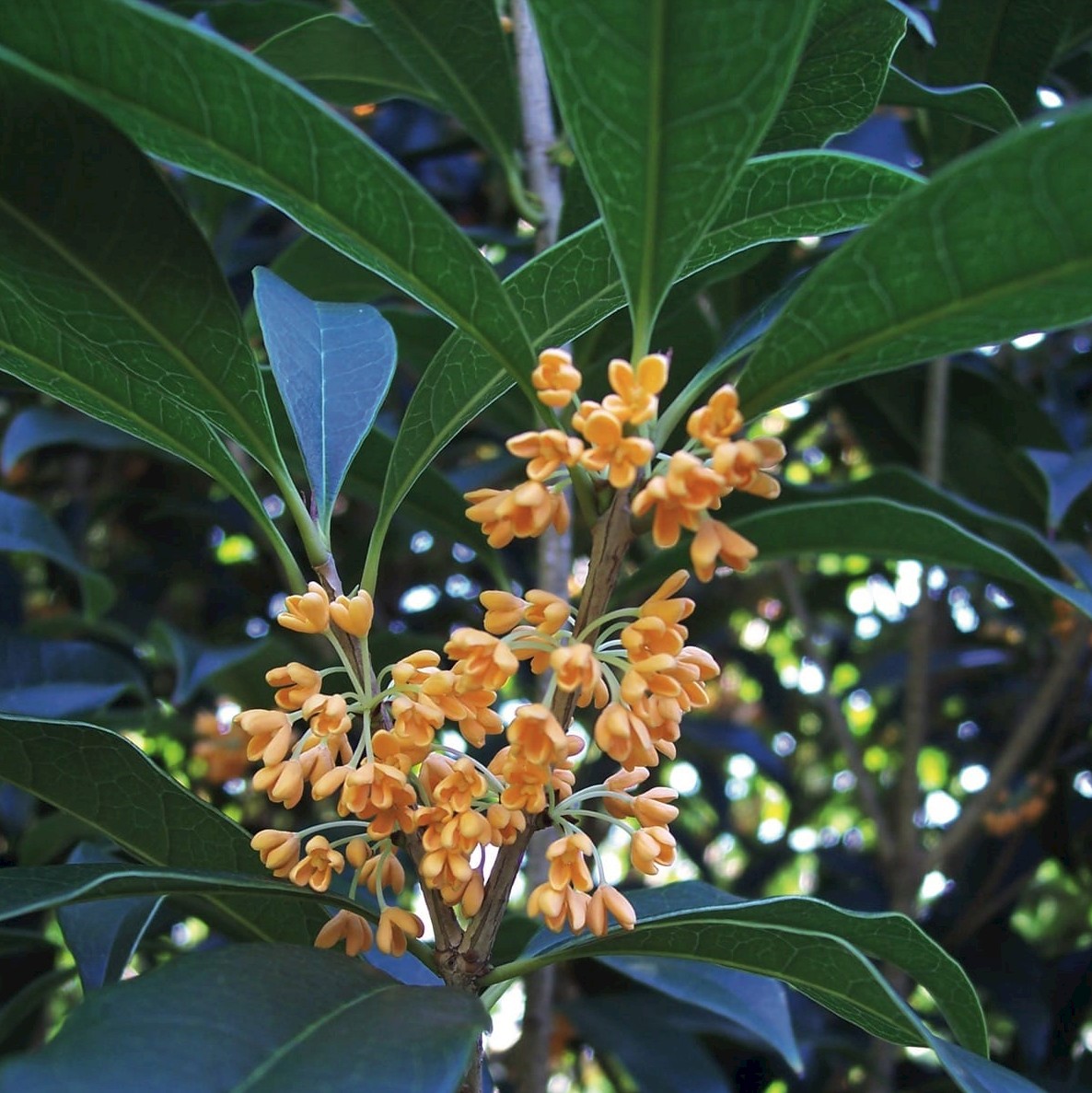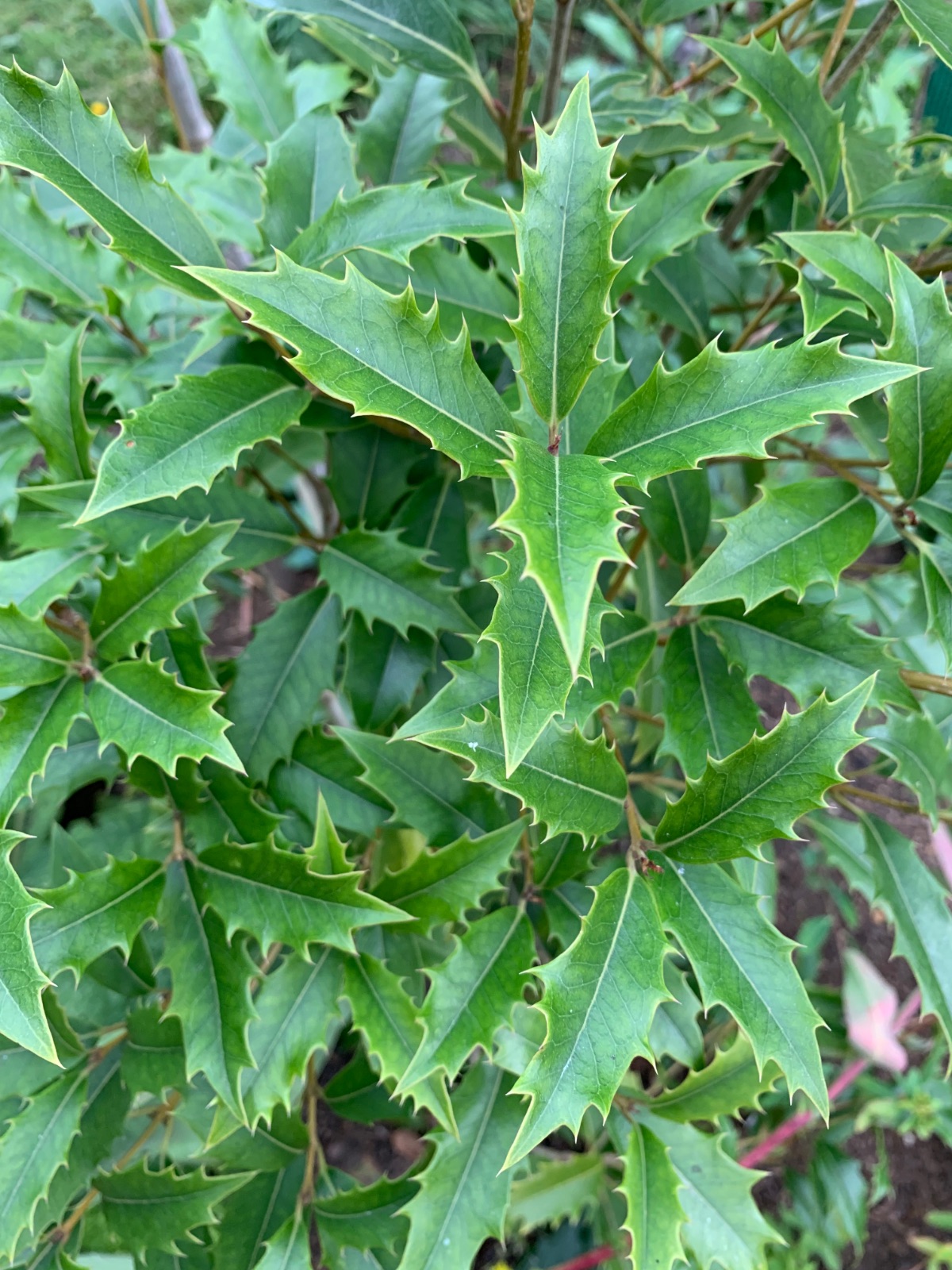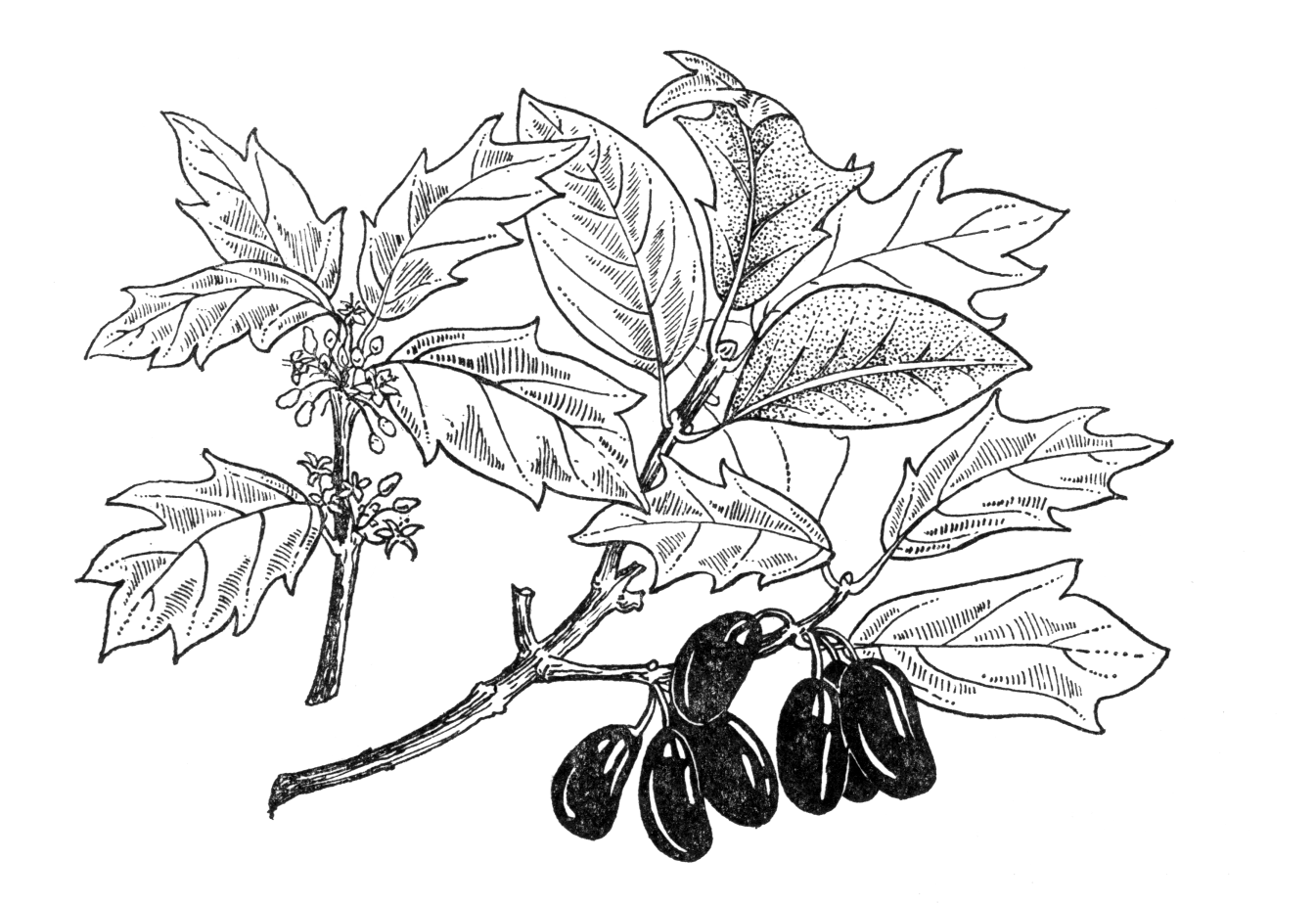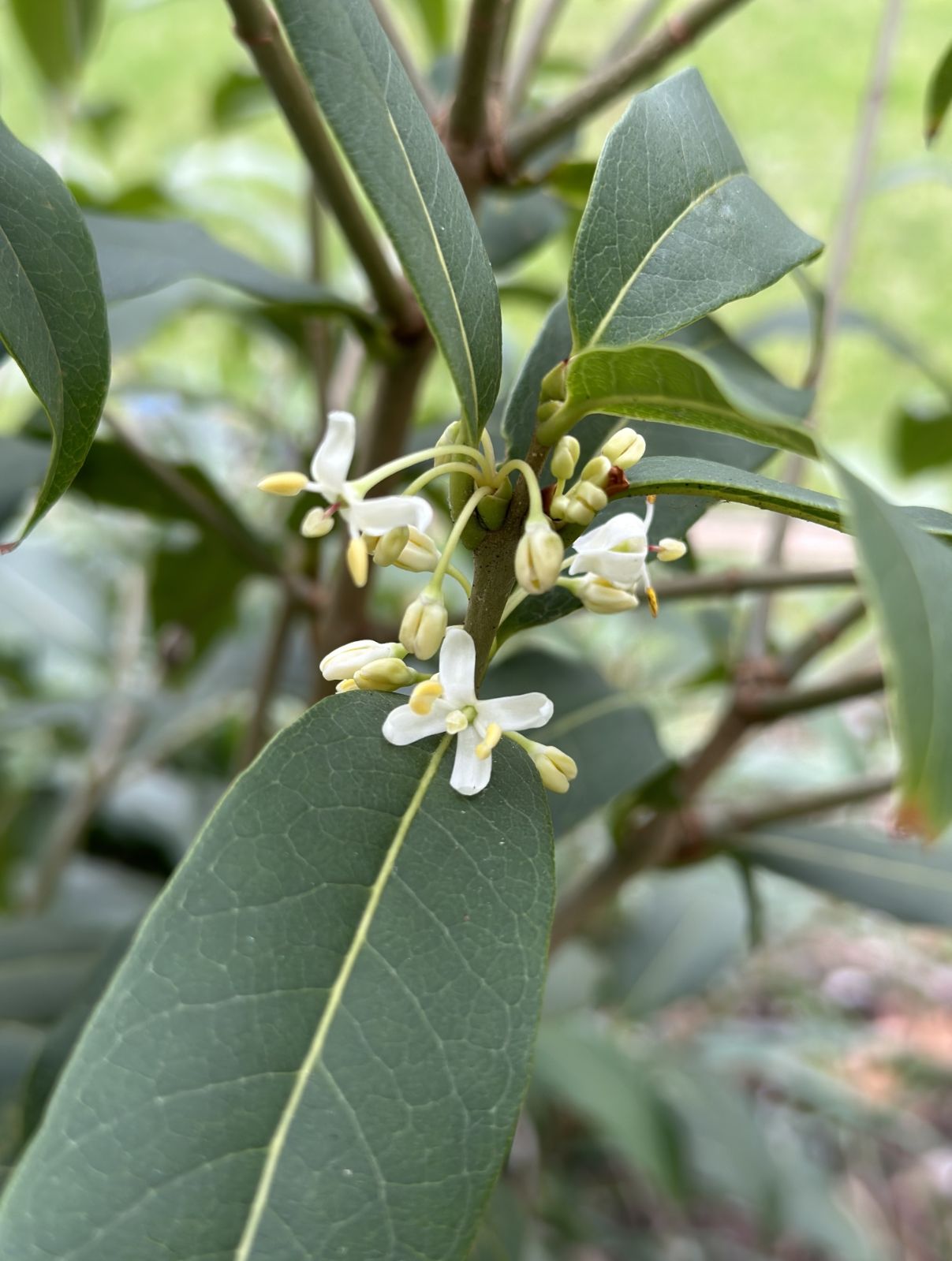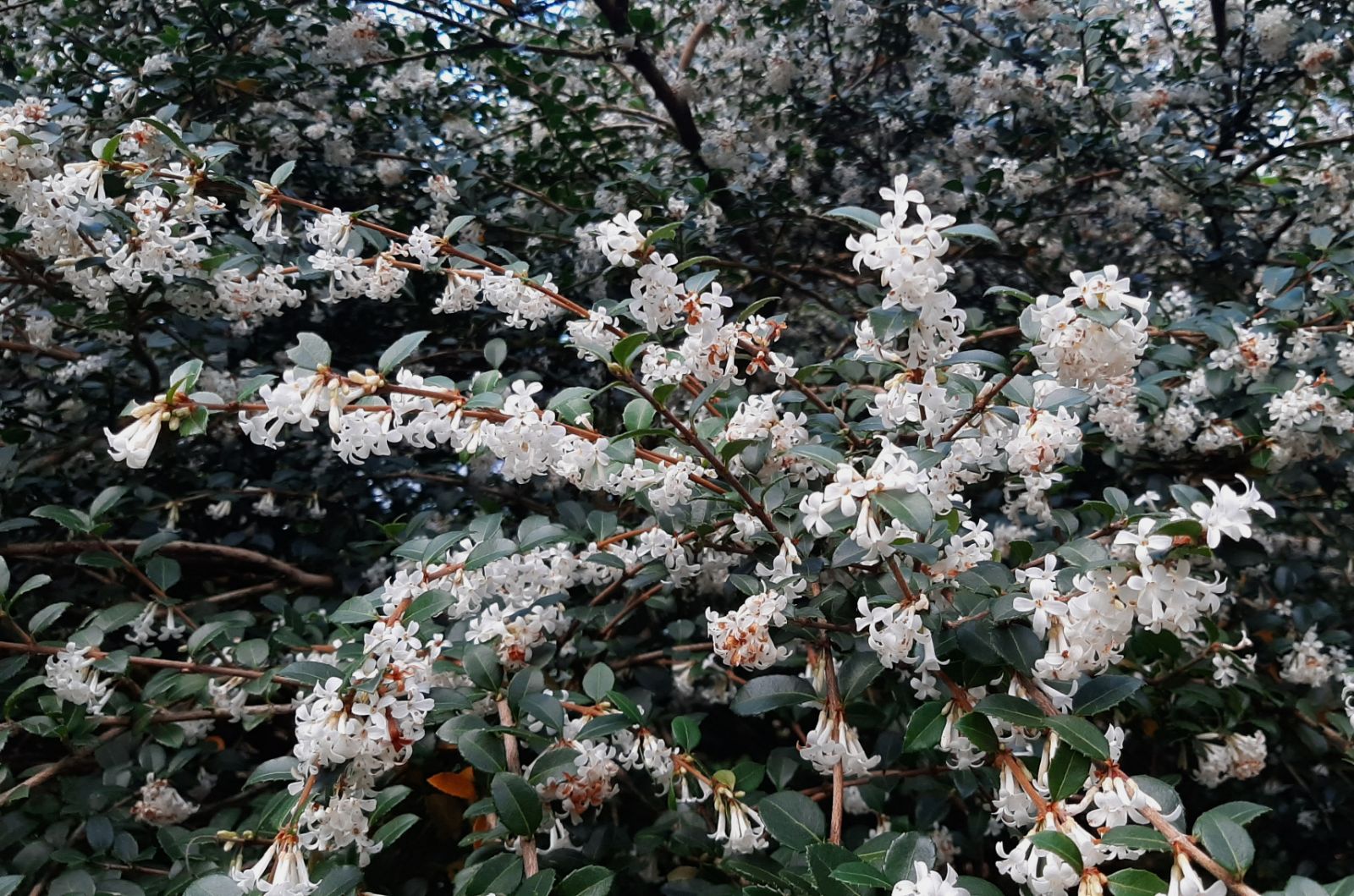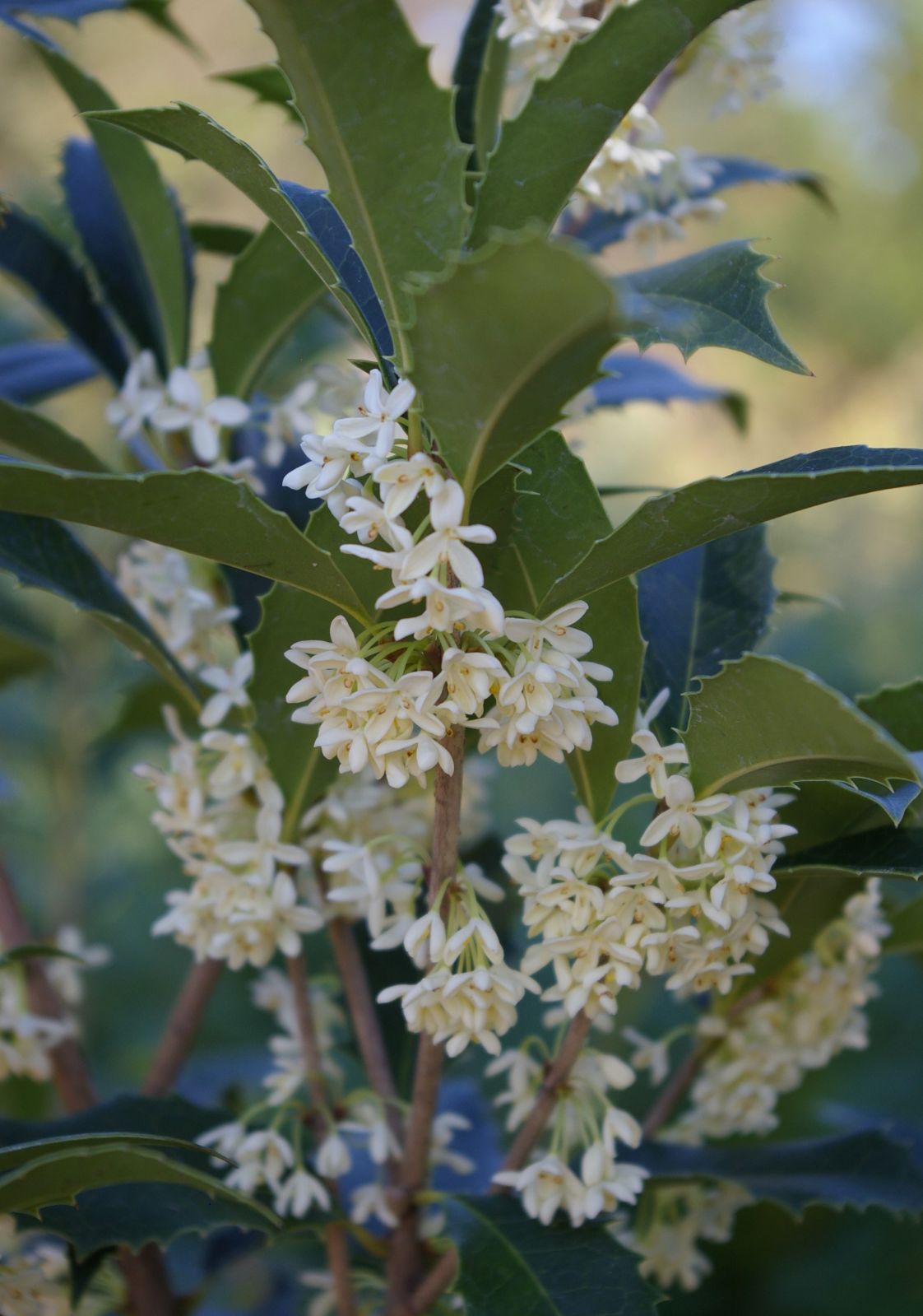Osmanthus
Credits
Article from Bean's Trees and Shrubs Hardy in the British Isles
Article from New Trees by John Grimshaw & Ross Bayton
Recommended citation
'Osmanthus' from the website Trees and Shrubs Online (treesandshrubsonline.
Family
- Oleaceae
There are about 30 species of Osmanthus, mostly occurring in subtropical eastern Asia, though one or two species are found in North America (Wallander & Albert 2000). They are evergreen shrubs or small trees with simple, opposite leaves. The leaves are glabrous, entire, serrated or spiny and often covered with glands. Inflorescences are terminal or axillary panicles or fascicled cymes. The flowers are hermaphrodite, though usually becoming unisexual, and the plants are subsequently dioecious or androdioecious. The calyx is four-lobed and campanulate; the corolla is four-lobed, white or yellow and campanulate or tubular; the lobes are imbricate, obtuse and often reflexed; stamens two (to four). The fruit is a drupe with a hard or bony endocarp (Green 1958, Grohmann 1974, Chang et al. 1996).
The genus Osmanthus is most familiar in the form of several bushy evergreen shrubs or small trees that bear fragrant white flowers, sometimes in great profusion (for example, O. delavayi), or add foliage interest to the garden (for example, O. heterophyllus). Despite their being usually treated as shrubs it seems that many species are in fact capable of becoming broad-crowned small trees – although this may require warmer conditions than experienced in northern European gardens. Several species described in Flora of China have not yet been introduced to cultivation and could be looked for by collectors. Osmanthus are easily propagated by cuttings rooted in warmth in summer, or by seed, although this is not often produced in cultivation.
Bean’s Trees and Shrubs
Osmanthus
A small group of evergreen shrubs and small or medium-sized trees. Two species (perhaps reducible to one) inhabit the southern USA, the rest are from Asia and the Pacific region. The cultivated species are from China and Japan, but one, O. decora, is from western Asia. They are closely akin to the olive (Olea), and have opposite leaves. Flowers white or yellowish, sometimes unisexual, in small axillary or terminal clusters. Calyx and corolla four-lobed; stamens two. Fruit an oval drupe, usually dark blue or violet. In O. americanus and the other American species, not treated here, the inflorescence is paniculate.
These shrubs are handsome evergreens with a holly-like appearance. They are sometimes propagated by grafting on privet – an undesirable method, for they are healthier and better on their own roots. Cuttings taken about the end of July strike readily if given a little bottom heat. They grow well in any good garden soil, and have no objection to chalk.
Footnotes
Revised by P. S. Green of the Herbarium, Royal Botanic Gardens, Kew.

